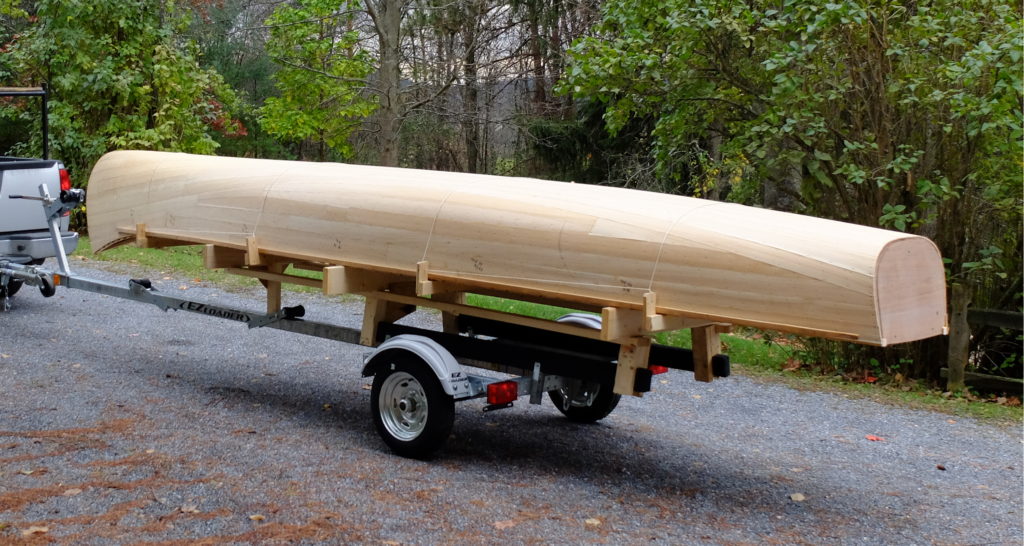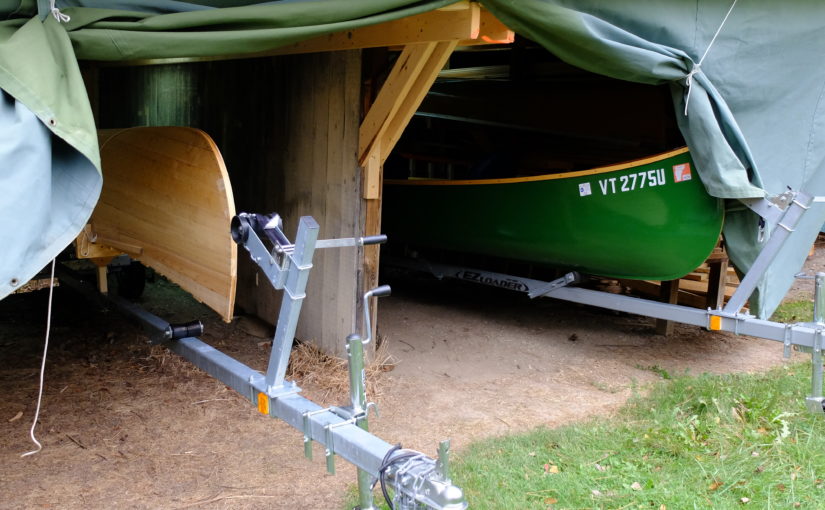After I got done with crawlspace renovations I wanted to do something fun, and started another (second) grand laker-type canoe. I had the cedar, I had the form, why not. It took a while to let the memory of tedium finishing the last one – always the least-fun part – fade enough to want to do it again. This boat followed the same procedure as the first, with a couple improvements. First, I have a bigger steamer, a ‘cajun-style outdoor cooker’ rated at something like 50,000 BTU’s which can boil a gallon of water in about 5 minutes. Much more steam makes bending the 3/8″ ribs easier. I also soak the ribs for hours before putting them in the steamer. I was careful removing the planked hull from the form to avoid stressing the inner gunwale – this time, I started unclamping the gunwale at the transom, letting the ribs expand and relax outwards as I continued to unclamp moving towards the bow. This time, there was no damage to the gunwale. I also put a 1/2″ x 1″ reinforcing lamination on the inner gunwale after it is off the form as a stiffener. Finally, I am careful how I store the semi-finished hull to prevent it sagging around the supports before I get the fiberglass on. First picture – rib stock cut to length but not yet tapered. There are 54 ribs not counting the 4 pairs of cant ribs. Ribs measure 2 1/2″ x 3/8″.
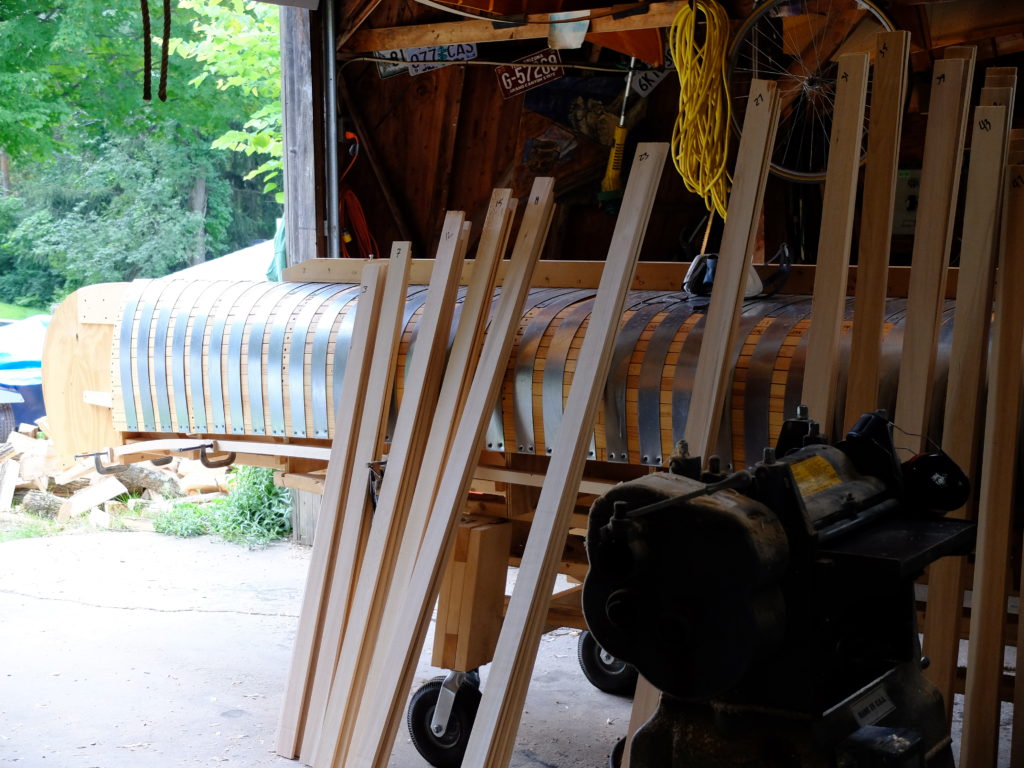
Ribs bent and on, including the 1/2 ribs through the center of the hull, half the planking on (3/16″ x 2 7/8″) – fasteners are 13/16″ brass canoe tacks from DB Gurney Co – part-way through the gored section.
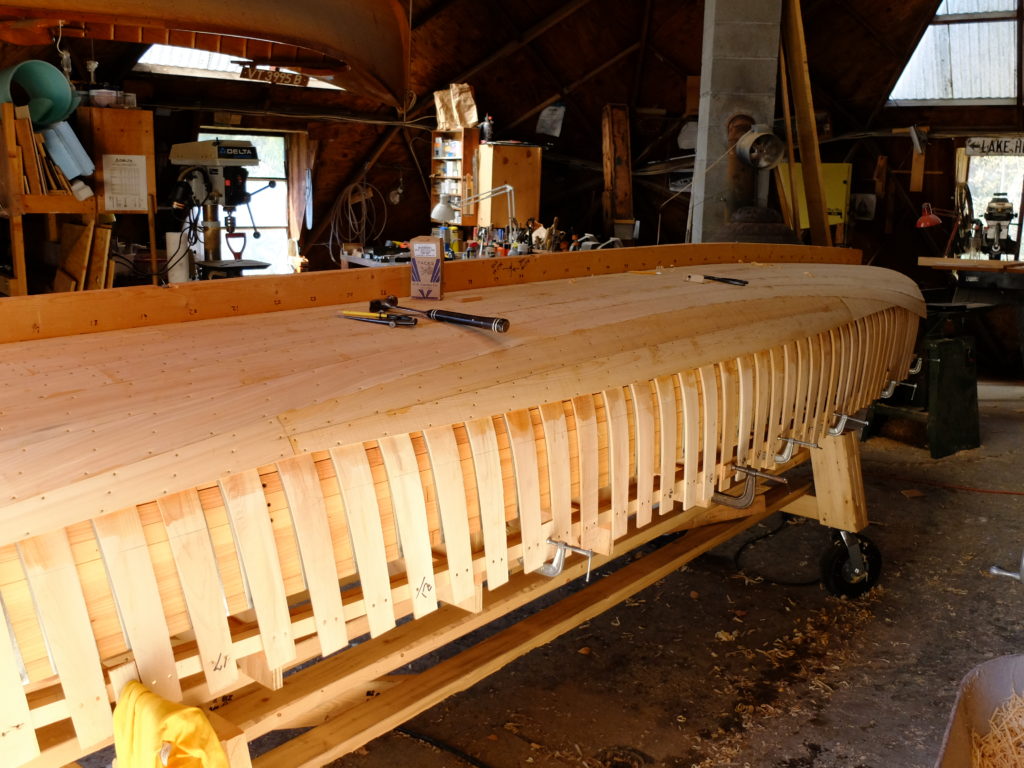
Another view showing next goring plank, and wheels on the ~400 pound form.
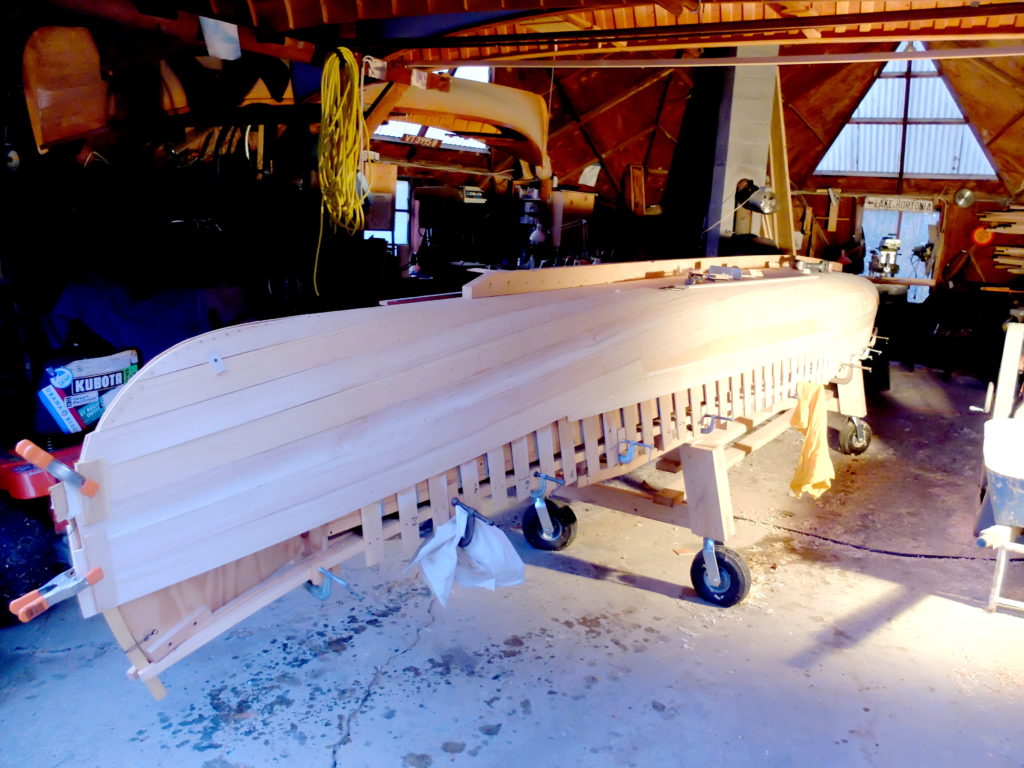
Off the form, sheer strake on, leaving 3/8″ space at top of ribs for the edge of the fiberglass, tied together at the stem and transom.
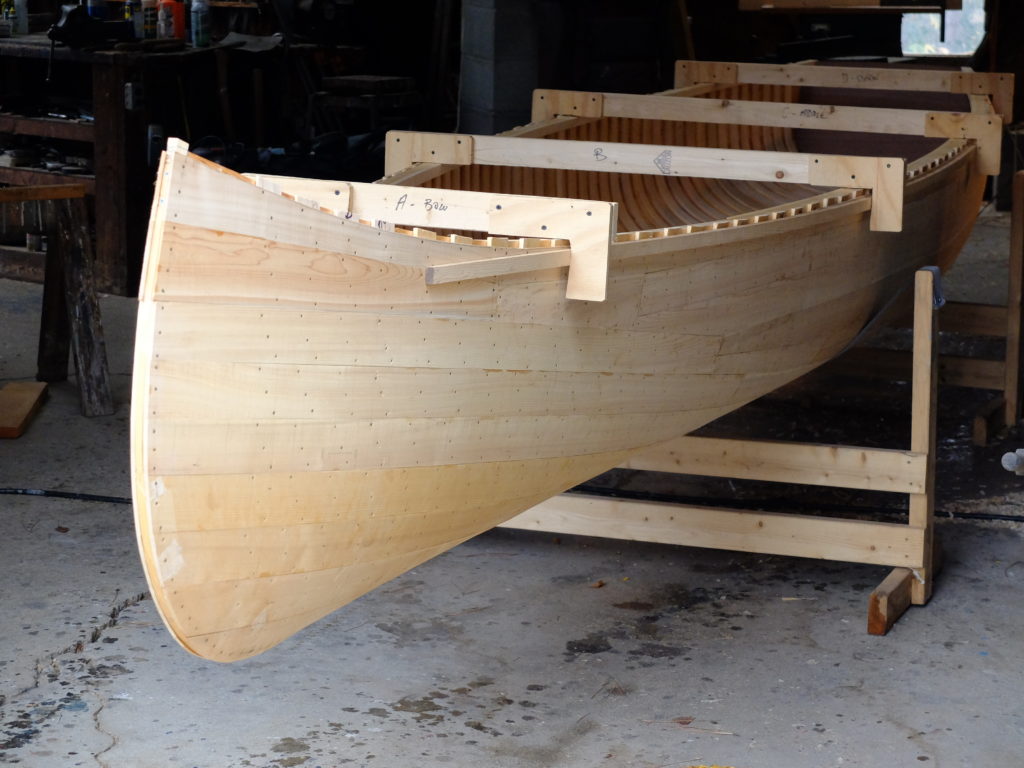
Closeup of my method of tying together the stem and inner gunwale – a chunk of mahogany glued/screwed to the stem and gunwales. The deck will also attach to it.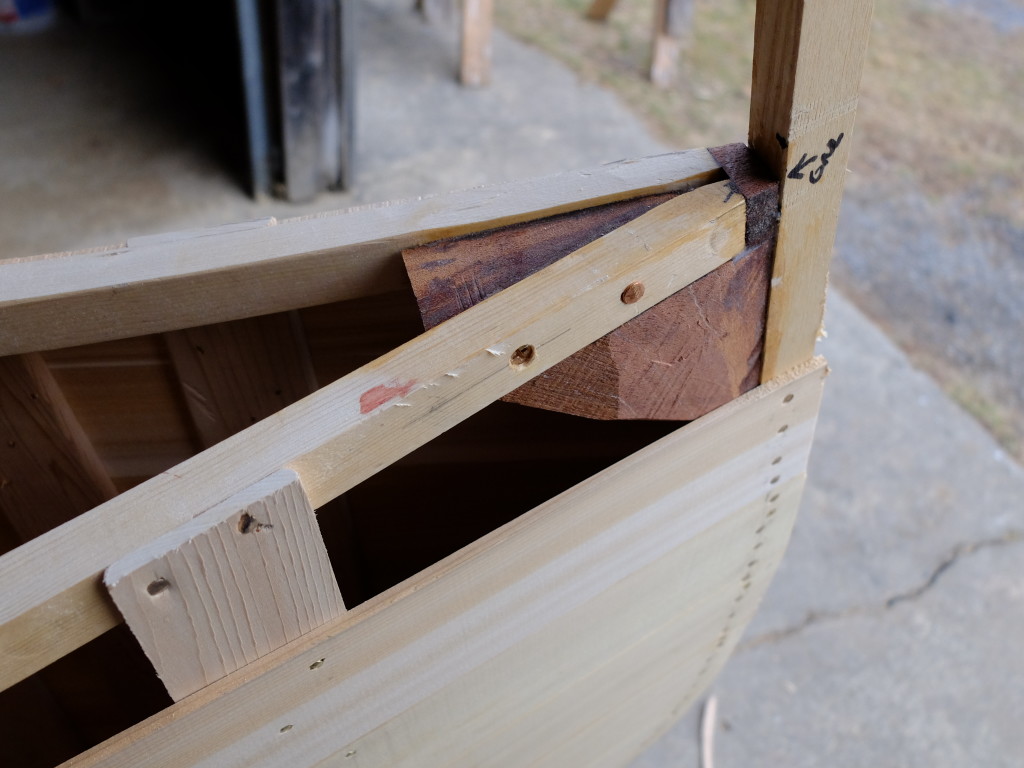
Rolling the semi-finished hull over to put on the trailer for storage – I will finish with the fiberglass work in the spring. The gunwales are temporarily held in place with the cross-braces and battens.
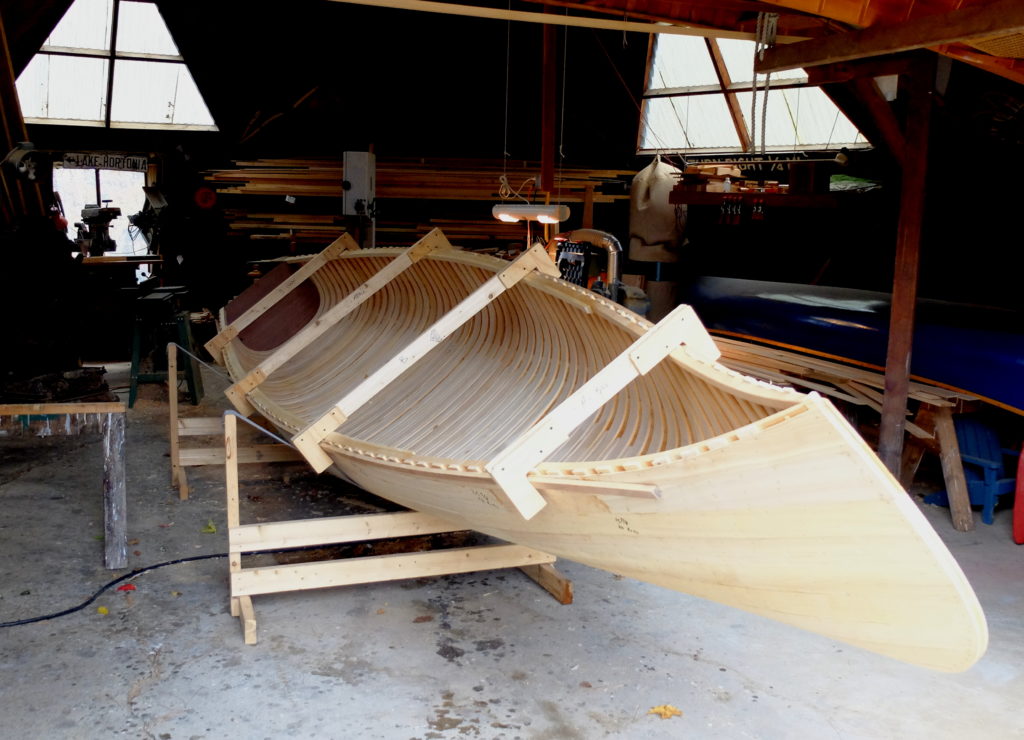
Braced and leveled on a trailer for winter storage.
